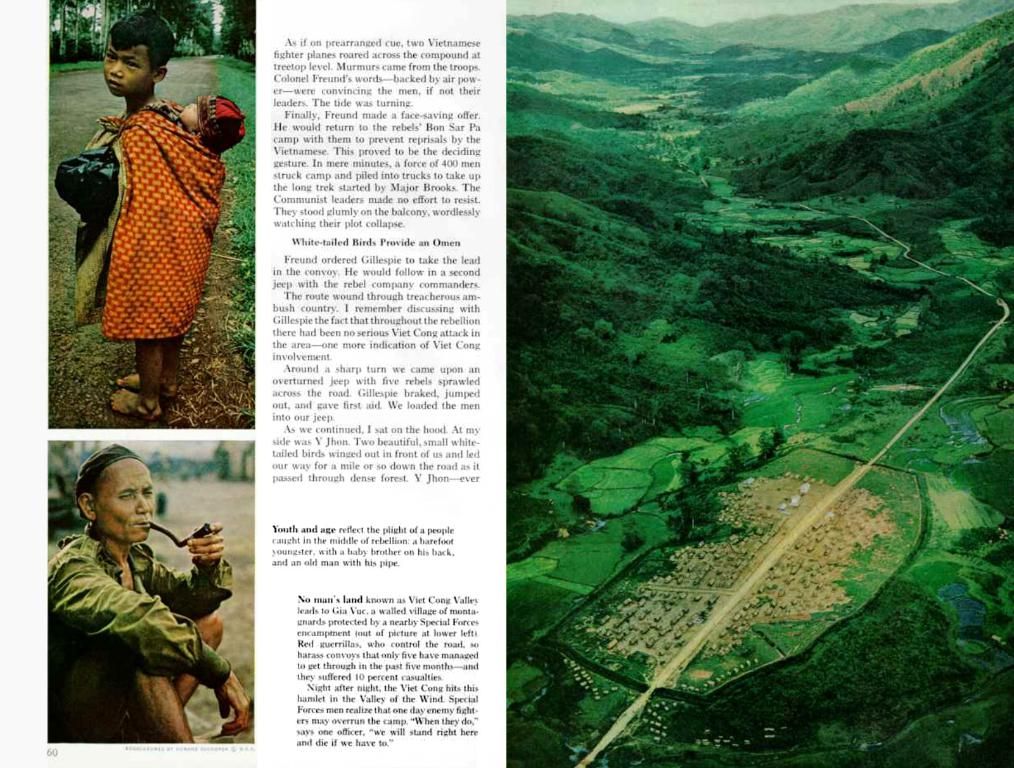Daily Transformations in Cityscape: Santiago Uribe Rocha Affirms
Medellín, Colombia, once known as one of the world's most dangerous cities due to cartel-related violence, has witnessed a breathtaking transformation under the guidance of its Chief Resilience Officer, Santiago Uribe Rocha. Born and raised in challenging circumstances, Santiago carries a powerful lesson imparted by his mother that hard work yields results. Applying this principle, Santiago now boasts two master's degrees and is working towards a doctorate in urban systems.
An Unexpected Journey
In 1991, Medellín was a city on the brink of collapse, with violence and cartels tearing it apart. Back then, the President appointed a Minister for Peace for the city. Santiago, on the other hand, was immersed in South Africa's peace process, making beneficial connections between the two nations.
Peace and prosperity go hand in hand, according to Santiago. Violence and the illegal drug trade were not the root of the problems in Medellín—inequality and socio-spatial segregation were the main issues. To combat these, the city established round tables in neighborhoods, with the goal of uniting people who had been divided in the past, much like Nelson Mandela's local peace committees (LPCs) in South Africa.
People First
Santiago's passion for people's lives and wellbeing was further ignited by a devastating earthquake in Armenia. Witnessing the wreckage and heartbreak of those affected led Santiago to reevaluate the essence of a resilient urban system. For him, it is not simply about infrastructure; rather, it's about the people who populate the cities and the values they construct as social entities.
In 2006, Santiago returned to Medellín after 16 years and was appointed as the city's Chief Resilience Officer as part of the Rockefeller Foundation's 100 Resilient Cities initiative. Medellín was the only city that approached resilience from a social perspective, focusing on learning from the past to design a better future rather than concentrating solely on structural integrity.
Resilient Medellín
Tackling violence was a crucial part of Medellín's resilience strategy, resulting in the city dropping out of the "top 50 most violent cities" rankings in the 2000s. Through extensive dialogue with stakeholders at all levels, the city established a consensus on the future it envisioned for itself. Community-based initiatives like the House of Justice in every neighborhood, aimed at curbing youth violence, and focusing on education and job creation, allowed the city to level the social playing field, fostering opportunity for its diverse population.
The now-iconic "two aerial cable-car lines connecting high-density hilly neighborhoods" aimed to integrate marginalized areas and bring them into the urban fabric. As a result, Medellín is a safer city today, with Santiago still collaborating with other municipalities tackling similar problems through the 100 Resilient Cities network.
A Mindset Shift
Santiago admits there's still work to be done, and he intends to appoint a successor before taking a year-long hiatus to focus on his cycling passion. Throughout his work, Santiago emphasizes the importance of giving power back to the people and reconnecting them with their ability to shape their communities.
In a fast-paced, communication-dominated world where instant gratification is the norm, Santiago warns against being too focused on immediate signs of value. "True impact takes time to filter through" he insists, praising projects like the tackle against malnutrition that won't bear fruit for decades but lay the foundation for a better future for the city's youth.
Lessons from the Past
Santiago's work in Medellín highlights the transformative power of meeting challenges head-on and emphasizes the importance of a grassroots approach to community development. Focusing on the wellbeing of people, hard work, and dialogue can pave the way for lasting change in even the most problematic circumstances. Through his work, Santiago continues to inspire hope and resilience in the City of Eternal Spring.
- Santiago's experience in Medellín demonstrates that finance, leadership, and business strategies can significantly transform a city, as he focused on social restructuring, community development, and long-term investments.
- With his steadfast dedication to people's wellbeing and demonstrable success in spearheading Medellín's resilience initiative, Santiago's leadership style embodies the interplay between finance, business, and a genuine concern for the betterment of society.






